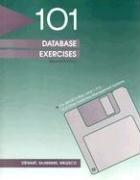| Question 1.1. (TCO 1) Object-oriented programming generally focuses on _____. (Points : 5) | A. separating the interface from the implementation B. client side access to implementation details C. creating as many classes as possible D. code reuse with methods All of the above None of the above Only A, B, and D | | Question 2.2. (TCO 2) Which of the following components of a class definition do not have a return type? (Points : 5) | Public member methods Accessor/mutator methods Constructors Private member methods None of the above | | Question 3.3. (TCO 5) Which of the following method pairs are not examples of method overloading? (Points : 5) | public void Dance() ; public int Dance(int x) public int Walk(int x, int y) ; public void Walk(int x, int y, int z) public int Jump(int x, int y) ; public int Jump(int y, int x) All of the above Only A and B | | Question 4.4. (TCO 1) Which of the following statements is/are true? (Points : 5) | In object-oriented programming we design the program as a set of cooperating methods. The procedural paradigm permits the modeling of a software system in a more natural way compared to the object-oriented paradigm. Abstraction is the process of extracting the high level information about a category entity or activity, while ignoring the "unimportant" details. None of the above | | Question 5.5. (TCO 1) Which of the following would be the most appropriate choice for a method in a Cube class? (Points : 5) | Volume() Area() Radius() CalculateVolume() | | Question 6.6. (TCO 2) Which of the following statements is/are true? (Points : 5) | A. The state of an object must be public, for easier modification. B. A static method of a class can access non static members of the class directly. C. A constructor is automatically created for you if you do not define one. None of the above Only B and C | | Question 7.7. (TCO 2) What parts of a class, designed as a black box system, should not be exposed to future programmers? (Points : 5) | Inputs Outputs Interface Implementation | | Question 8.8. (TCO 2) A class is designed with three public attributes: attributeOne, attributeTwo and attributeThree. attributeOne is an integer data type, attributeTwo is a double data type and attributeThree is a string data type. Which pseudocode representation(s) of getters would be appropriate for this class? (Points : 5) | int getAttributeOne() { return attributeOne } string getAttributeTwo() { return attributeTwo } int getAttributeThree(int newAttributeThree) { attributeThree = newAttributeThree } void getAttributeTwo() { return attributeOne } Both A and D None of the above | | Question 9.9. (TCO 2) You are tasked to create an EntertainmentSystem class and you want to minimize data dependencies. You also need to protect specific attributes from outside entities. What object-oriented concept(s) would you use to accomplish these goals? (Points : 5) | Composition of classes Universal access to methods Inheritance Encapsulation All of the above | | Question 10.10. (TCO 7) Which of the following statements is true? (Points : 5) | A pure virtual function is a function without function implementation and is ended with =0; An actual object can be created from an abstract class. A pure virtual function is a function that cannot be inherited and therefore must be overloaded. A pure virtual function cannot be overridden. | | Question 11.11. (TCO 7) A(n) _____ cannot be instantiated and therefore is used only to form related derived classes. (Points : 5) | method abstract method class abstract class | | Question 12.12. (TCO 7) _____ enforce a(n) _____ which is a methodology used in object-oriented programming to forces programmers to adhere to certain "rules."(Points : 5) | Abstract classes; contract Static variables; hierarchy Classes; transitive communication Method signatures; encapsulation None of the above | |






